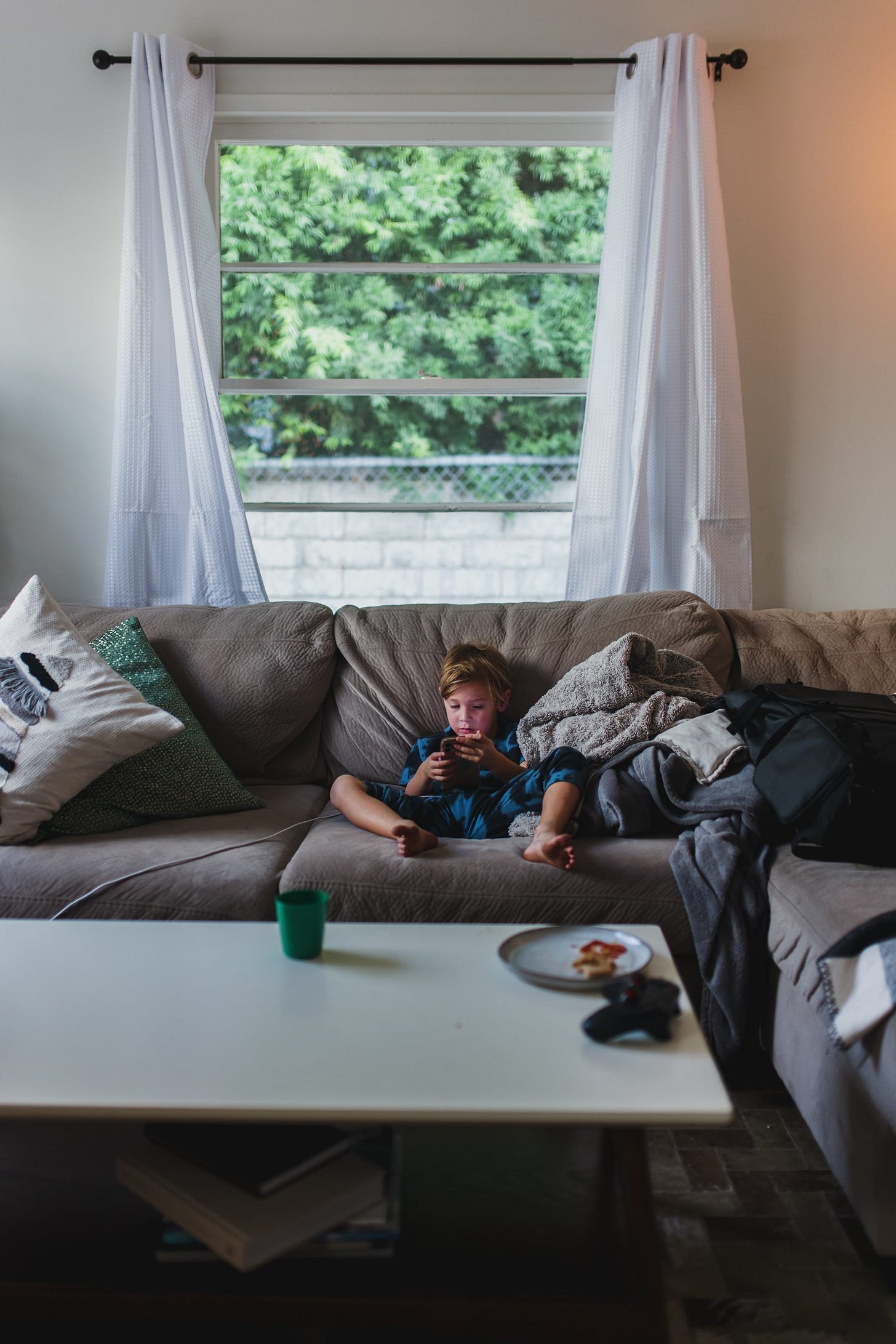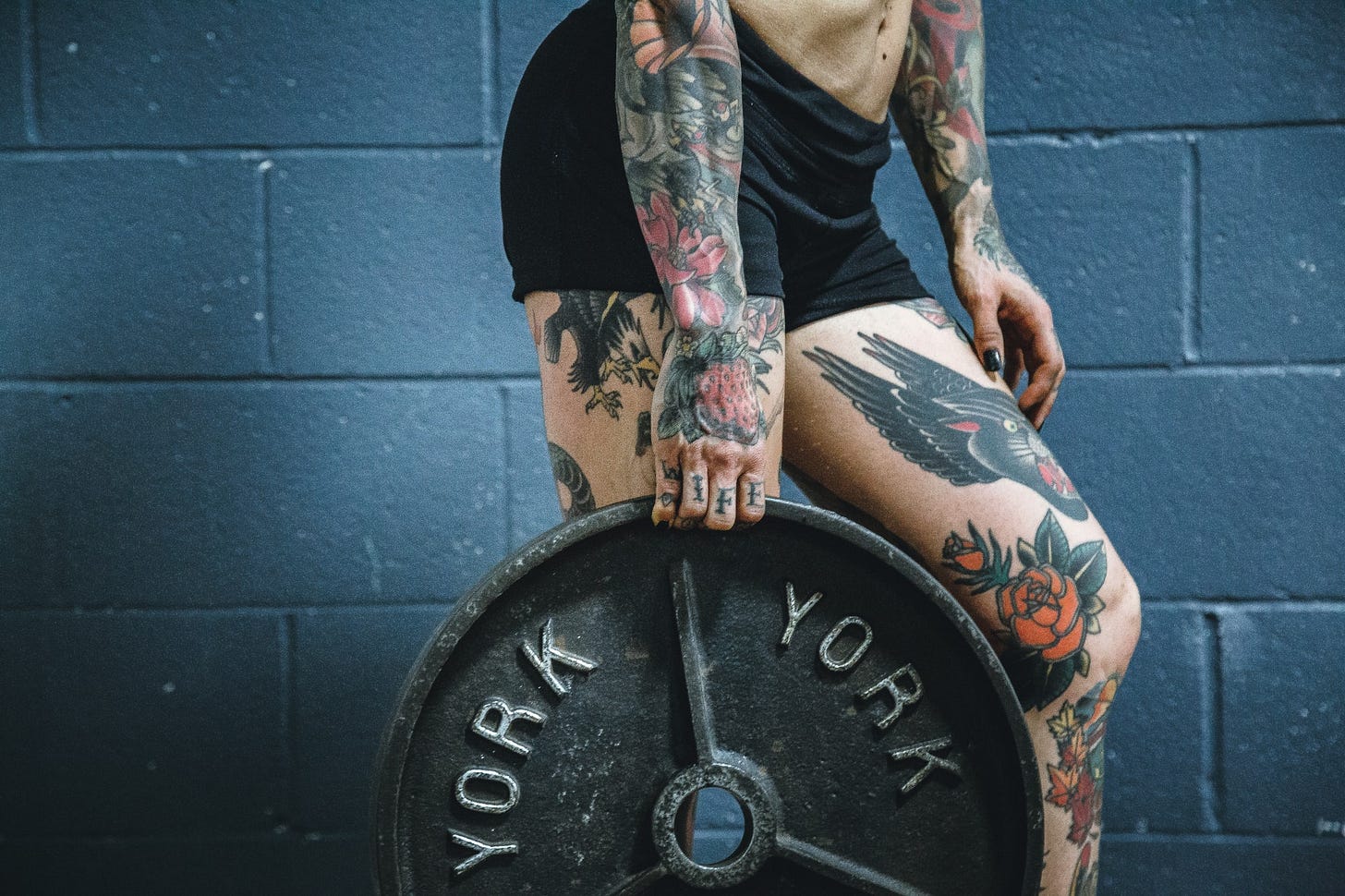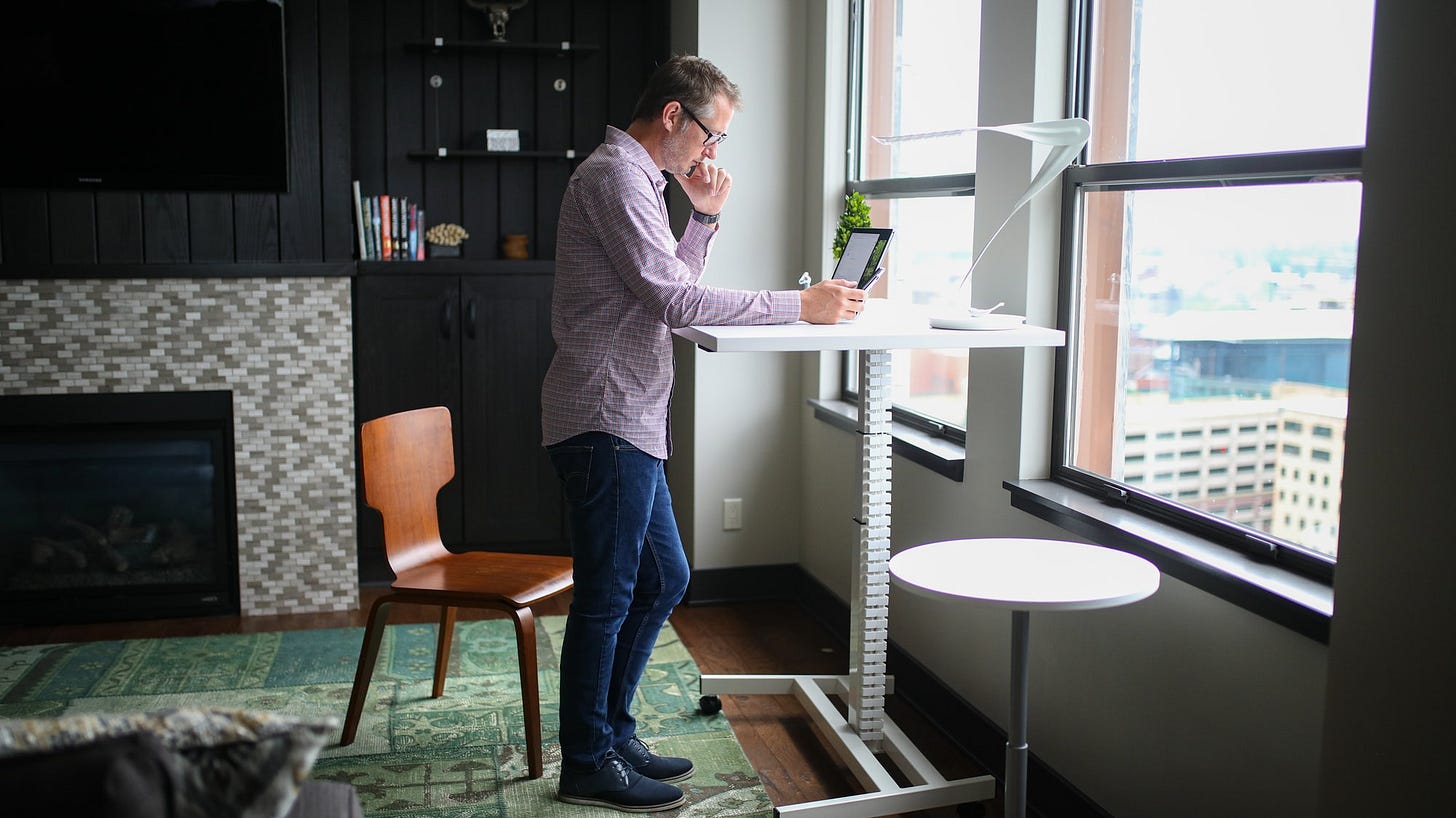Hey hey!
Hope your weekend is going well.
Three things for today.
is sitting the new smoking? or just click-bait nonsense?
3 quotes, featuring Pressfield and Bruce Lee.
3 clarifications I needed to write on my earlier articles, as I realise I am not as clear as I think I am.
#1 is sitting the new smoking?
do we sit too much?
This makes the assumption that the hunter-gatherer, our forefathers, were constantly active and didn't sit much. Is that why they were lean and healthy? Is that why we are suffering from poor posture?

The reason this question is being asked is that we do sit a lot. From school, we are trained to sit and plod at something. School becomes college becomes a work desk. And 6 hours becomes 8 becomes 10. And with binge-watching, extended work hours - half our lives seems to be spent sitting.
And vaguely, adult health seems to be rather abysmal. Posture is poor. We don't feel vibrant and youthful much. Instead, we tend to have a lot of niggles and aches and pains.
verify the assumption. reframe the problem.
Let's look at the assumption that the hunter-gatherers didn't sit much. They actually sat around quite a bit. Maybe not as much as the modern work-desk human but closer to that than to zero. But it is the other part that differentiates us from them - they peppered their day with lots of light activity, had a couple of hours of moderate activity and a few minutes of intense activity. For example, chopping wood, carrying water, prepping the food etc. And they were done in different seated postures, including a lot of squatting. But never for too long a stretch.
When we frame the problem differently - not as sitting too much but (a) being inactive and (b) sitting for an extended period at a stretch - we can sort this problem out. That's one.

What about the poor posture that we have? Isn't being hunched over with a rounded upper back and rounded lower back the cause for all neck pain and back pain and tightness? Again, the problem seems to be (in addition to the 2 named above) weak muscles in the first place. When we do not have strong back muscles, coupled with habitually sitting in a poor posture, our muscles become weak AND tight. So, the third bit of this issue can be framed as (c) not enough strength and/or resilient muscles, which are unable to counter the sitting.
what can you do about it?
Have a timer for 25 minutes. Whenever the timer goes, get up, walk around. Maybe stretch one muscle. Say a calf stretch. Next time the beeper goes, the other calf. Or do some rocking. Or neck nods. The list is endless. Take 30-60 seconds and just do something that breaks up the sitting.
build enough mobility i.e. can your joints express themselves fully? Or to use less jargon, can you squat freely and without pain?
build some strength i.e. strengthen your glutes, your back, your core and all that jazz.
have a hobby that involves moving about and being moderately active. Gardening, for example. Or doubles badminton.
have one bout of intense activity daily or at least every other day. A 30-minute strength and conditioning session, for example. This and #3 can obviously be the same.
Breaking up the extended sitting with little bits of a simple activity, having enough mobility and strength, having some intense activity, and having longer bouts of moderate activity - that's a good solution to get out of the drawbacks of our cultural issue today. Because this is the world we live in and unless our life adapts around it, we will invariably blame sitting too much.
Instead, fix it. Fix your routine. Fix your habits. You don't need to do anything dramatic. Start small.
#2: 3 quotes
There's no mystery to turning pro. It's a decision brought about by an act of will. We make up our mind to view ourselves as pros and we do it. Simple as that.
– Steven Pressfield
Pressfield talks about being an amateur vs being a pro. And how it is as simple as flipping a switch in our heads about how we think of ourselves. And of course, the actions to follow.
As much as I've been reading and writing about these things for the past year, I am nowhere close to exhibiting any of these comprehensively. But I have gotten more reps in the past 12 months than in the previous 12 months. Maybe that's what it is? Or not. I don't know. But that doesn't mean I can sit around and wait for divine intervention and enlightenment.
If you think a thing is impossible, you'll make it impossible. Pessimism blunts the tools you need to succeed.
– Bruce Lee
How does one differentiate between blind faith and pessimism? How does one have the confidence to push through, or when to call it quits?
Sound thinking
is to listen well and choose
one course of action.
– Heraclitus
For a chronic over-thinker like me, the standout advice here is to pick one course of action. And then, remove pessimism. And keep chugging along. Confusion reigns when I second-guess and when I don't make a decision, even after all the facts are assembled. Then, it is simply about making a call. No amount of wishing for it to be the right call will make that happen. Only one way to find out - by making it happen.
#3A: on absolute strength and is it unnecessary
The younger you are (let's say if you are not yet 30 years old), the more relevant getting as strong as you can is. Your body recovers faster, you have a lot more time on your hands, and you are still at the peak of your physical and mental conditioning and can push yourself. In my post about kettlebells, if I sounded like I discouraged you from lifting heavy, that was not my intent or my stance at all. It all depends on who you are, how old you are, and what your goal is.
If you are under-30, you have time on your side. You can spend a couple of years with barbells, and getting as strong as you can. And then move to kettlebells for a couple of years. And then callisthenics for a couple. While one can definitely mix-and-match, if I were to offer advice to my younger self, I'd recommend focusing on skill work on one tool and getting decent at it and then playing with something else.
These are all skills you can play around with for the rest of your life. And the stronger you are, the better.
As Coach Dan John says, there are a lot of 8 weeks in your life. Don't keep jumping goals - focus, nail one. Then, move on to the next.
#3B: but how much strength do you actually need?
For health and longevity, not too much. Strength, lifting, or most forms of physical endeavour are just games that entertain us. Mastery is a worthwhile path that grows us physically, mentally, and spiritually. But you can pick many things to try and master. Lifting weights is just one option. While the numbers I talk about can simultaneously be seen as "Woah, that's unnecessary" and "umm, that's not much", it depends on your perspective. Strength is a skill and the longer you work at it, the stronger you will get.
But if your goals are simply to avoid muscle loss in old age, to be resilient, to be able to do household activities, to be able to lug your back and go on long walks and be healthy - you don't need to get anywhere close to the loads that are lifted at the gym.
StrongEnough might be the upper limits and in all probability, even that might be unnecessary. It all depends on your goal and long-term outlook.
#3C: on standing desks
I've had a standing desk for the better part of the last decade. I tend to sit lesser than the average adult (in my friends and family, personal observation only) and generally walk around or fidget a bit too much.
In the sitting article, you should've seen that the harm comes not from sitting but a combination of sitting for extended periods at a stretch and the lack of activity that we do over the course of a day.
A standing desk does not solve either. While you might sit lesser, standing in the same spot while moving less is NOT a solution. Instead of tight hips, you will have tight calves or whatever, from all the standing.
So, before you ditch your work desk and get a standing desk, remember that the point is to break up the sitting or standing and throw in a bit of moving about. Even if it is as little as 60 seconds every 30 minutes.
My favourite method is the Pomodoro - set a timer for 25 minutes. And take a break for 5 minutes, during which I, unfortunately, waste time on Reddit. But when my brain works, instead I do some stretches or a few quick resets.
Thanks for reading! Do write to me if you have any feedback or thoughts you’d like to share.














